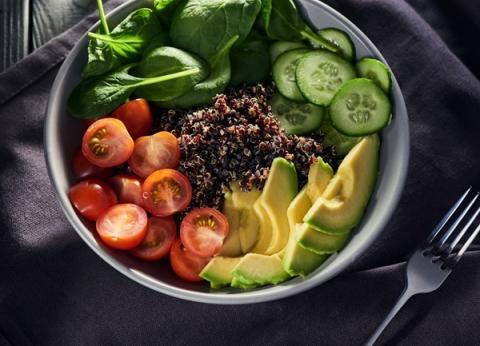The DASH Diet for Heart Health
“The DASH Diet is a healthy eating pattern that is easy to stick with, and it works for the whole family,” said Dr. Catherine Champagne, professor and nutritionist at Pennington Biomedical. “For the past 15 years, DASH has been ranked at or near the top of the U.S. News & World Report rankings because it is scientifically proven to lower blood pressure, lower the risk of stroke, lowers the risk of cardiovascular events, and works to improve metabolism regardless of your size.”
What is the DASH diet?
The DASH diet focuses on eating a variety of foods that are rich in nutrients such as potassium, calcium, magnesium, and fiber. It emphasizes:
- Fruits and vegetables
- Whole grains
- Lean proteins (especially fish and poultry)
- Low-fat dairy products
- Nuts, seeds, and legumes
It also encourages reducing sodium (salt) intake, limiting added sugars, and cutting back on foods high in saturated fats, like fatty meats and full-fat dairy. The goal is to create a balanced plate at every meal—one that’s colorful, flavorful, and good for your heart.
You don’t have to overhaul your kitchen overnight. Here are some easy ways to start eating in line with the DASH diet:
Load up on fruits and vegetables. Aim for at least five servings of fruits and vegetables each day. Try adding berries to your breakfast, a side salad to your lunch, and steamed vegetables or roasted sweet potatoes with dinner.
Choose whole grains. Swap out white breads, pastas, and rices for whole-grain versions. Look for words like “whole wheat” or “100% whole grain” on food labels.
Focus on lean protein. Instead of red meat, go for skinless chicken, turkey, fish, or plant-based proteins like beans and lentils. Grilling, baking, or steaming your proteins helps keep meals lighter.
Cut back on salt. Many processed and packaged foods are loaded with sodium. Read labels carefully, and try seasoning your meals with herbs, spices, lemon, or vinegar instead of salt.
Snack smart. When hunger hits between meals, reach for a handful of unsalted nuts, low-fat yogurt, crunchy veggies with hummus, or a piece of fruit.
Be mindful of portion sizes. Even healthy foods can add up quickly. Using smaller plates, measuring portions, and checking serving sizes can help keep your meals balanced.
Limit sugary drinks and treats. Soda, sweetened coffee drinks, and desserts can sneak in a lot of extra calories and sugar. Choose water, herbal teas, or sparkling water flavored with fruit instead.
Beyond lowering blood pressure, research shows the DASH diet can help with weight management, reduce the risk of heart disease, and support overall well-being. Best of all, it’s not a restrictive or fad diet—it’s a flexible, realistic way of eating that you can stick with for life.
